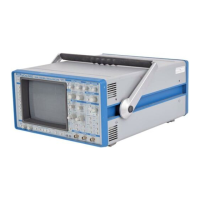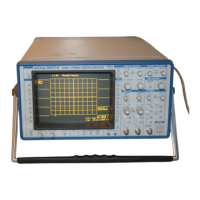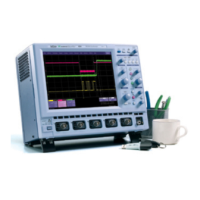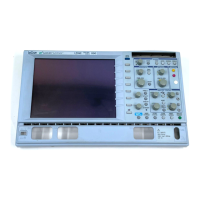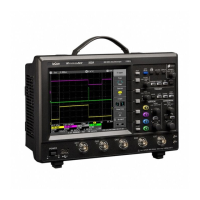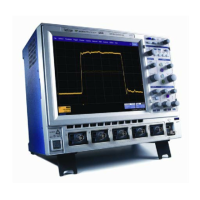C–5
Using FFT
If a signal contains a frequency component above Nyquist, the
spectrum will be aliased, meaning that the frequencies will be
folded back and spurious. Spotting aliased frequencies is often
difficult, as the aliases may ride on top of real harmonics. A
simple way of checking is to modify the sample rate and verify
whether the frequency distribution changes.
Leakage FFT assumes that the signal contained within the time grid is
replicated endlessly outside the observation window. Therefore
if the signal contains discontinuities at its edges, pseudo-
frequencies will appear in the spectral domain, distorting the real
spectrum. When the start and end phase of the signal differ, the
signal frequency falls within two frequency cells broadening the
spectrum.
This effect is illustrated in Figure C–1. Because the display does
not contain an integral number of periods, the spectrum
displayed in Trace B does not reveal sharp frequency
components. Intermediate components exhibit a lower and
broader peak. The broadening of the base, stretching out in
many neighboring bins, is termed leakage. Cures for this are to
ensure that an integral number of periods is contained within the
display grid or that no discontinuities appear at the edges.
Another is to use a window function to smooth the edges of the
signal.
Choosing a Window The choice of a spectral window is dictated by the signal’s
characteristics. Weighting functions control the filter response
shape and affect noise bandwidth as well as side-lobe levels.
Ideally, the main lobe should be as narrow and flat as possible
to effectively discriminate all spectral components, while all side
lobes should be infinitely attenuated.
Chosen from the “with window” menu, the window type defines
the bandwidth and shape of the equivalent filter to be used in
the FFT processing.
In the same way as one would choose a particular camera lens
for taking a picture, some experimenting is generally necessary
to determine which window is most suitable. However, the
following general guidelines should help (see page C–11 for
window types).
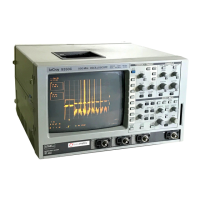
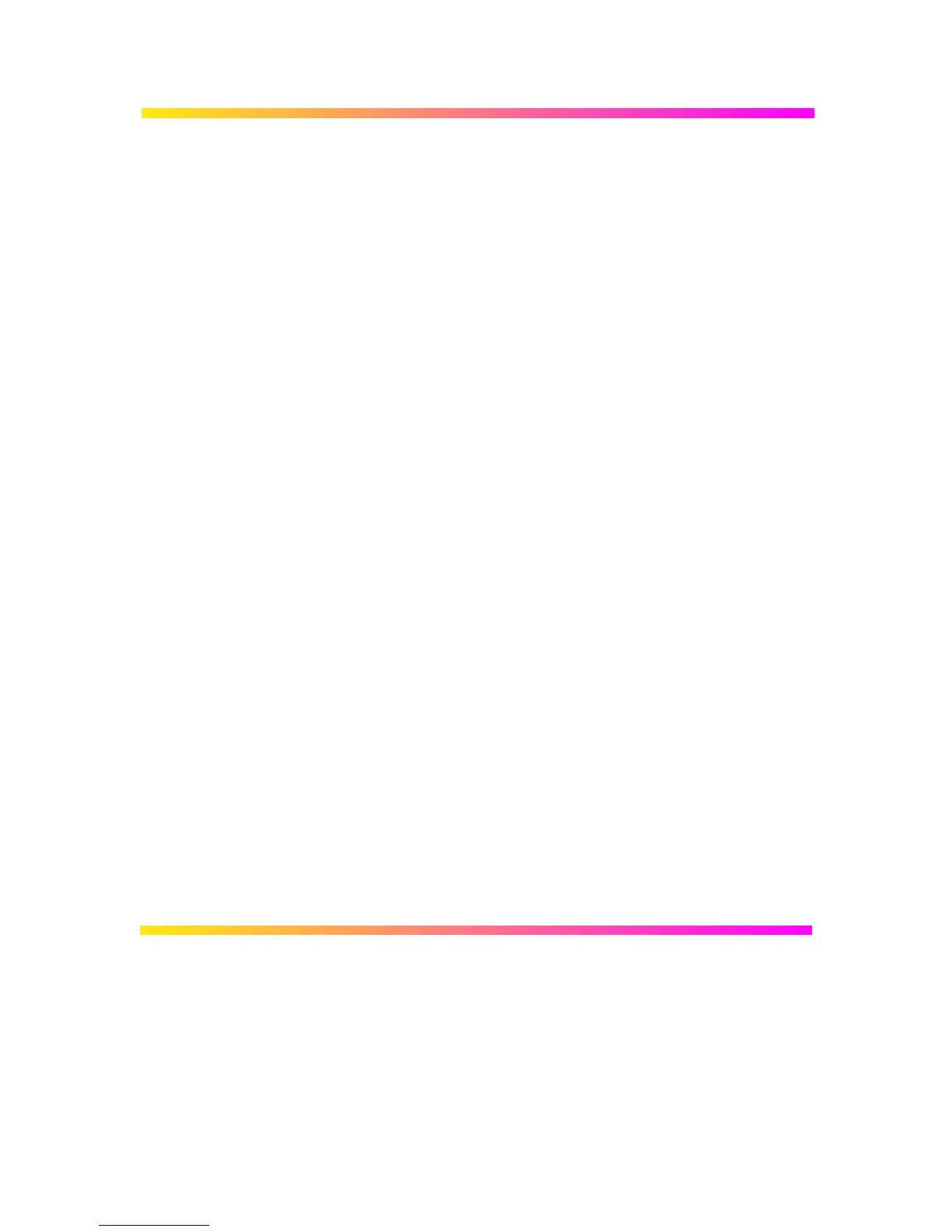